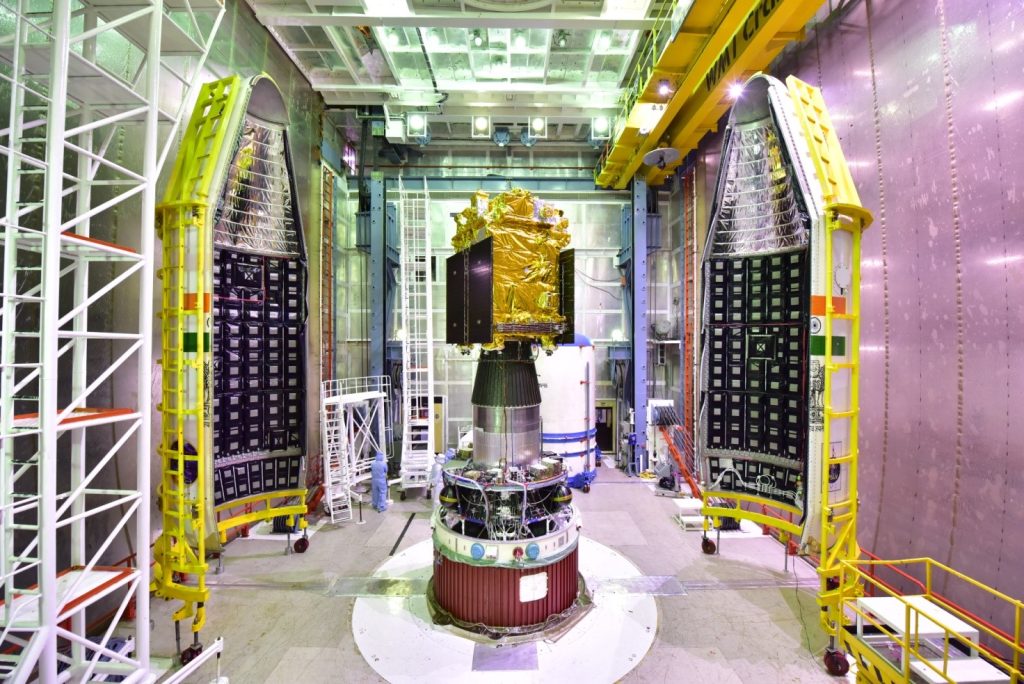In a groundbreaking feat for Indian space exploration, the Indian Space Research Organisation (ISRO) has successfully executed the Halo-Orbit Insertion (HOI) maneuver for its solar observatory spacecraft, Aditya-L1. This historic event unfolded on January 6, 2024, at approximately 16:00 Hrs (IST), marking a pivotal phase in the mission’s objective to continuously observe and comprehend the chromospheric and coronal dynamics of the Sun.
Aditya-L1 now orbits in a periodic Halo trajectory located approximately 1.5 million km from Earth along the Sun-Earth line, boasting a unique three-dimensional periodic orbit at Lagrangian point L1. The chosen Halo orbit, characterized by semi-axes Ax: 209200 km, Ay: 663200 km, and Az: 120000 km, offers optimal conditions for a mission lifetime of 5 years. Crucially, this orbit minimizes station-keeping maneuvers, ensuring fuel efficiency and maintaining an uninterrupted view of the Sun.
Placing Aditya-L1 in a Halo orbit provides distinct advantages over a Low Earth Orbit (LEO). The smooth Sun-spacecraft velocity change facilitates helioseismology, while being beyond Earth’s magnetosphere allows for “in situ” sampling of the solar wind and particles. Additionally, the Halo orbit enables continuous observation of the Sun and unobstructed communication with ground stations.
The meticulous Halo orbit insertion process initiated as Aditya-L1 crossed the XZ plane in the Sun-Earth-L1 rotating system, necessitating the nullification of X and Z velocity components and the attainment of the required Y-velocity in the L1 rotating frame. This critical mission phase demanded precise navigation and control, with constant monitoring and adjustments to the spacecraft’s speed and position using onboard thrusters.
The success of the insertion not only underscores ISRO’s prowess in complex orbital maneuvers but also instills confidence in handling future interplanetary missions. Aditya-L1, conceived and realized at the UR Rao Satellite Centre (URSC) with collaborative efforts from various ISRO centers, carries payloads developed by Indian scientific laboratories, including IIA, IUCAA, and ISRO.
The spacecraft’s journey commenced with its launch by PLSV-C57 on September 2, 2023, from SDSC SHAR, entering an elliptical parking orbit before embarking on an extraordinary journey toward the Sun-Earth-L1 Lagrange point. Five liquid engine burns during the Earth orbit phase progressively increased the orbital size, culminating in the trans-L1 injection (TL1I) maneuver. Carefully devised maneuver strategies minimized incremental velocity addition, with additional burns (TCM-1 and TCM-2) addressing errors during the TL1I phase.
Aditya-L1 underwent a 110-day cruise phase to achieve its present condition, leading to the targeted HOI on January 6, 2024. During the pre-commissioning phase, all payloads were rigorously tested, confirming their satisfactory performance.
The graphical representation of the Halo orbit insertion process illustrates the spacecraft’s trajectory from Earth towards the L1 point, with TCM-1 & 2 firings aligning it with the Halo Orbit. The red dot marks the HOI condition achieved on January 6, 2024, representing a minimum fuel consumption condition and ensuring Aditya-L1’s alignment with the Halo Orbit. Without this crucial maneuver, the spacecraft would have followed a different trajectory, highlighting the significance of the HOI process in this historic solar exploration mission.


